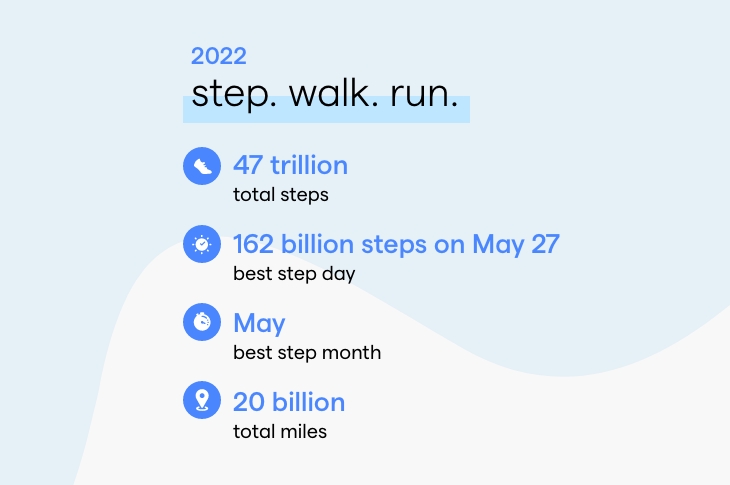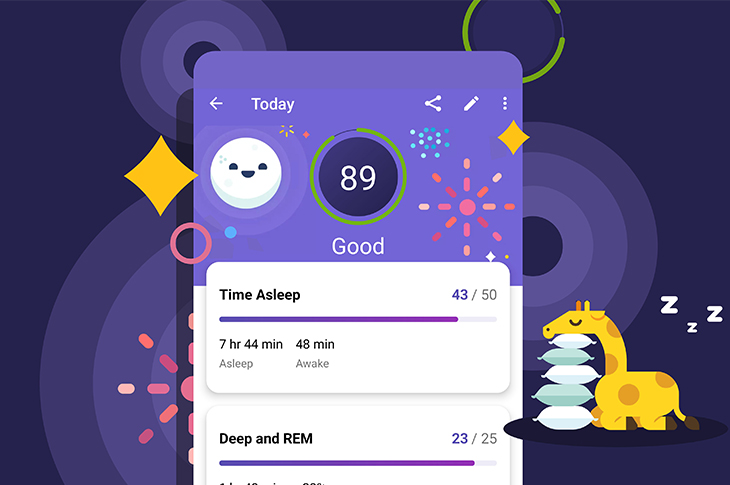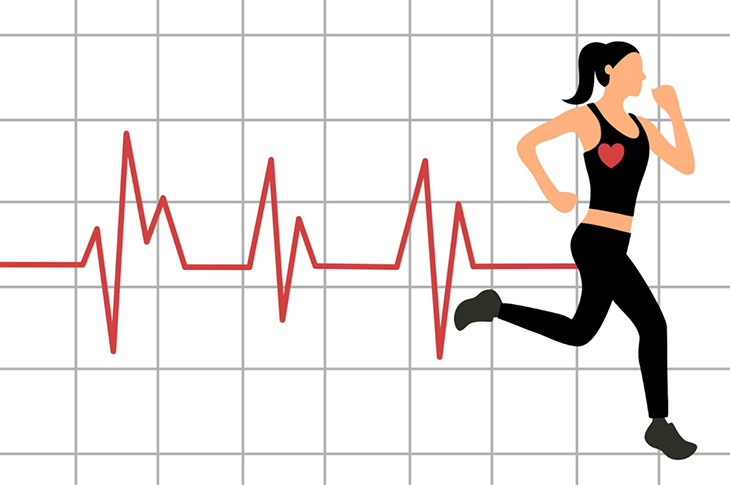As we head into a new year, it’s always important to reflect on the one gone by. 2022 was filled with highs and lows, wins and losses, learnings and celebrations. Above all else, it taught us that when we come together as a community, we can achieve great things such as the combined 47 trillion steps we took in 2022!
If you find that impressive, you’ll want to keep reading because Fitbit researchers analyzed data from Fitbit users around the world and found some of your most outstanding stats to date. Read on to discover which countries were the top contenders for highest step count, best rest, least stressed, and more.
Total Global Step Stats
The Fitbit community stepped up and showed out on May 27 taking a total of 162 billion steps, making it the most steps taken in a single day around the globe in 2022. Fitbitters also seemed to have an extra spring in their step during the month of May as it was our best step month of the year!
Lastly, together we clocked 20 billion total miles in 2022. That’s enough to walk to Mars 143 times and enough to walk to Pluto 6.5 times!
Total Global Sleep Stats
How did Fitbitters fare when it came to hitting the hay? With an average of 6.5 hours of sleep and an average 76 Sleep Score, these metrics give you a “fair” score in snoozing. But not to worry, you can utilize your Fitbit sleep data to help get you back to an “excellent” sleep score in 2023!
Another fun fact? The most common sleep animal in 2022 was the Giraffe, which means your sleep tends to be shorter, and you are more likely to sleep later and wake up earlier. You have a relatively good proportion of deep and REM sleep despite a shorter overall duration.¹
Total Global Exercise Stats
Active Zone Minutes, or AZM, is the heart-based metric that tracks the amount of time a user spends in heart-pumping activity. With a total of 173 billion Active Zone Minutes, Fitbit users certainly brought the heat in 2022—specially on May 14, with 612 million minutes total. Way to get moving!
Who got the highest Active Zone Minutes in 2022?
Based on recommendations from the World Health Organization, American Heart Association, and others, we should do at least 150 minutes of moderate-intensity activity or 75 minutes of vigorous-intensity activity each week. So, who took these activity targets to heart and got the most AZMs in 2022? Drum roll please… Switzerland! Next up were Sweden and Denmark respectively.
Who stepped it up in 2022?
But which country was the real MVP of steps? Let’s get a round of applause for Hong Kong! Following closely behind were Switzerland and Spain. Well played!
Who got the best rest in 2022?
Even with busy schedules and fluctuating routines, Fitbitters remembered that when you prioritize getting good sleep, your body and mind are healthier. According to our data, Finland hit the lights the most this past year. Other top snoozers include New Zealand and Belgium.
Who had the best Stress Management Score in 2022?
You’ve been tapping into your mindfulness practice and putting your mental health first, even with the continued uncertainty in the world. And the country that won the best Stress Management Score in 2022? None other than Spain! Next up were Sweden, Netherlands, Ireland, and finally Denmark. How’s that for zen?
This new year will undoubtedly present a new series of opportunities and challenges as we all continue to refine and evolve our health and wellness routines. Through it all, it’s key to remember that the journey is just as, if not more, important than the destination. Cheers to 2023!
¹ Requires Fitbit Premium membership. Not intended for medical purposes. Consult your healthcare professional for questions about your health. Must wear device to sleep for at least 14 nights over a month-long period.
The post Fitbit’s Year in Review: Which Countries Took Their Health and Fitness to the Next Level in 2022? appeared first on Fitbit Blog.








